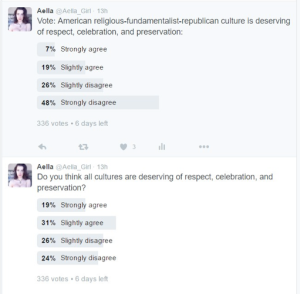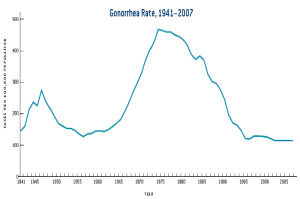If “evolution” is a word that comes up a lot in the late 1800s (even before Darwin,) “degenerate” is the word of the 1930s and 40s.
In Kabloona, (1941) an ethnography of the Eskimo (Inuit) of northern Canada, de Poncins speaks highly of the “pure” Eskimo, whose ancestral way of life remains unsullied by contact with European culture, and negatively of the “degenerate Eskimo,” caught in the web of international trade, his lifestyle inexorably changed by proximity and contact with the West.
In Caughey’s History of the Pacific Coast, (1933) he writes:
The Northwest Coast Indians felt the ill effects of too much contact with British, Russian, and American traders. The rum of the trading schooners was one of several factors contributing to the degeneracy of those not actually exterminated.
In Nutrition and Physical Degeneration, (1939) Dr. Price argues that modern foods are low in nutrient value and inferior to many native, ancestral diets, and that the spread of this “white man’s food” caused an epidemic of disease, tooth decay, and skeletal mal-formation, which he documents extensively. Dr. Price refers to the change in appearance from one generation to the next, coinciding with the introduction of modern foods, as “interrupted heredity.” The parents represent “pure racial type,” with strong teeth and bones, while the children, bow-legged and sick, suffer physical degeneration.
(This kind of language that Dr. Price uses sometimes confuses us moderns, because we flinch reflexively at phrases like “racial type” when in fact his argument is the inverse of the racist arguments of his day.)

Now, there is something twee about anthropologists (and historians) who long for the preservation of other peoples’ cultures when the people within those cultures seem to prefer modernity. Igloos and teepees may seem fun and exotic to those of us who don’t live in them, but the people who do might genuinely prefer a house with central heat and a toilet. Obviously the whole anthropologist schtick involves people who really like studying cultures that are distinct from their own, and if the people in those cultures adopt Western lifestyles, then there just isn’t much to study anymore.
(Imagine if we found out tomorrow that all of what we thought were variations in human DNA turned out to be contamination errors due to local pollen, and vast swathes of this blog became moot.)
It is easy to write off such notions as just feel-good sentimentalizing by outsiders, but these are at least outsiders with more first hand knowledge of these cultures than I have, so I think we should at least consider their ideas.
The degeneracy described as a result of contact with the West is not just physical or cultural, but also moral. A culture, fully-fledged, is one of humanity’s greatest technologies, a tool for the total transmission of a group’s knowledge, morals, and behaviors. Your ancestors, facing much the same environment as yourself, and armed with similar tools, struggled to obtain food, marry, raise children, and survive just as you do. The ones who succeeded passed down the lessons of their success, and these lessons became woven into the tapestry of culture you were raised in, saving you much of the trial-and error effort of reproducing your ancestors’ struggles.
 Some people claim to believe that all cultures are equally valuable and important. I don’t. I think cultures that practice things like cannibalism, animal sacrifice, and child rape are bad and I don’t cry for their disappearance. But virtually every culture has at least some good features, or else it wouldn’t have come about in the first place.
Some people claim to believe that all cultures are equally valuable and important. I don’t. I think cultures that practice things like cannibalism, animal sacrifice, and child rape are bad and I don’t cry for their disappearance. But virtually every culture has at least some good features, or else it wouldn’t have come about in the first place.
Cultural lessons stem from the practical–“Ice the runners of your sled to make it run more smoothly”–to the moral–“Share your belongings in common with the tribe”–to the inscrutable–“don’t eat the totem animal.” (Some of these beliefs may be more important than others.) Throughout all of recorded human history, most of us have passed on bodies of moral teachings under the name of “religion,” whether we believe in the literal truth of mythic stories or not.
Rapid cultural change–not the gentle sort that percolates slowly across generations, but massive variety precipitated by an industrial revolution or the sudden introduction of a few thousand years’ worth of technological advancement to a long-isolated people–outstrips a society’s ability to provide meaningful moral or practical guidance. Simply put: people don’t know what to do.
Take alcohol. People have probably been producing fermented beverages for at least 10,000 years, or for about as long as we’ve been trying to store pots of grain and fruit. The French have wine, Mongolians have fermented horse milk, the Vikings fermented honey and the Founding Fathers drank a lot of apple cider.
Alcohol has beneficial effects–few pathogens survive the fermentation process–and obviously harmful effects. Societies that traditionally produced large quantities of alcohol have evolved social norms and institutions to help people enjoy the beneficial effects and avoid the bad ones. France, for example, which in 2014 produce 4.5 billion liters of wine and consumed 2.8 billion liters of the same, is not a nation of violent, wife-beating, car-crashing drunkards. French social norms emphasize moderate wine consumption accompanied by food, friends, and family.
By contrast, in societies where alcohol was suddenly introduced via contact with whites, people don’t have these norms, and the results–like rampant alcoholism on Native American reservations–have been disastrous. These societies can–and likely will–learn to handle alcohol, but it takes time.
 Our own society is undergoing its own series of rapid changes–industrialization, urbanization, post-industrialization, the rise of the internet, etc. Andean cultures have been cultivating coca leaves for at least 3,000 years, apparently without much trouble, while the introduction of crack/cocaine to the US has been rather like dropping bombs on all of our major cities.
Our own society is undergoing its own series of rapid changes–industrialization, urbanization, post-industrialization, the rise of the internet, etc. Andean cultures have been cultivating coca leaves for at least 3,000 years, apparently without much trouble, while the introduction of crack/cocaine to the US has been rather like dropping bombs on all of our major cities.
The invention of fairly reliable contraception and the counter-culture of the ’60s and ’70s led to the spread of “free love,” which in turn triggered skyrocketing gonorrhea rates. Luckily gonorrhea can be treated with antibiotics (at least until it becomes antibiotic resistant,) but it’s still a nasty disease–one internet acquaintance of mine caught gonorrhea, took antibiotics and thought he was in the clear, but then doctors discovered that the inside of his penis was full of scar tissue that was dangerously closing off his bladder. They had basically cut him a new urethra once they were done removing all of the scar tissue, and he spent the next few months in constant, horrible pain, even while on medication.
 And to add insult to injury, everyone in his social circle just thought he was bitter, jealous, and trying to make his ex-girlfriend look bad when he tried to warn them that they shouldn’t sleep with her because she gave him gonorrhea.
And to add insult to injury, everyone in his social circle just thought he was bitter, jealous, and trying to make his ex-girlfriend look bad when he tried to warn them that they shouldn’t sleep with her because she gave him gonorrhea.
Of course, gonorrhea is just the tip of the horrifying iceberg.
By contrast, the Amish look pretty darn healthy.
Degeneracy isn’t just a sickness of the body; it’s a falling apart of all of the morals and customs that hold society together and give people meaning and direction in their lives. You don’t have to waste years trying to “find yourself” when you already have a purpose, but when you have no purpose but to feed yourself, it’s easy to become lost.
I should note that Dr. Price didn’t just examine the teeth of Eskimo and Aborigines, but also of Scots, Swiss, and Americans. His conclusion–nutritional degeneracy due to contact with modern foods–was the same regardless of culture. (Note: nutrition and food production have changed since 1939.) Or as Scott Alexander recently put it:
I am pretty sure there was, at one point, such a thing as western civilization. I think it involved things like dancing around maypoles and copying Latin manuscripts. At some point Thor might have been involved. That civilization is dead. It summoned an alien entity from beyond the void which devoured its summoner and is proceeding to eat the rest of the world.
Well, that sounds a fair bit more dire than Dr. Price’s assessment. Let’s assume Scott is being poetic and perhaps exaggerating for effect. Still: massive cultural changes can sweep the normative rug out from beneath your feet and leave you injured and confused. It will take time–perhaps centuries–for society to fully adjust to the technological changes of the past hundred years. Right now, everyone is still muddling through, trying to figure out what will kill us and what will save us.
[…] Source: Evolutionist X […]
LikeLike
Dr. Price was largely a quack. I debunked a lot of his ‘foundations” claims here
I’ve yet to read his book, but he was wrong on a lot. The snake oil salesmen Dr. Mercola is on their payroll and has been given numerous letters to stop peddling his garbage claims.
All brains aren’t the same, as you know. Each population went through different selection pressures. We have found the spots in the brain where moral thoughts and actions occur. Knowing this, it’s clear that each culture has different views on what is ‘moral’, there is no ‘universal morality’
And another point for your argument on degeneration is the Pima Indians. When they were introduced to a Western lifestyle, diabesity exploded in their populations.
Once the Pima were introduced to our diets, the percentage of people with those diseases exploded. Let me quote Gary Taubes from Good Calories, Bad Calories:
Then he talks about how over the next 25 years that the game was almost hunted to extinction and that the Gulf River got overtaken by Anglo settlements. So, he says, by the late 1890s, the Pima were relying on government rations to avoid starvation.
Researchers wondered whether their sedentary behavior was the cause of rising obesity rates, or, the logical explanation, diet. The same researchers even notice that obesity was rare among the Pueblo who were sedentary as well. Quoting Taubes:
Also give this a read.
The Pima, Sumo and Canine Diets – The Epiphenomenon of Obesity IV
Moreover, it was noticed that the Pima’s diet consisted of “mainly beans, tortillas, chili peppers and coffee while oatmeal and eggs are occasionally eaten for breakfast. Meat and vegetables are eaten only once or twice per week.” (Taubes, 2011: 238)
This section ends with the conclusion that excessive carbohydrate consumption was the cause for the obesity and diabetes rise in the Pima. It’s the only logical conclusion to draw. They were lean before the introduction of Western diets, obese and diabetic after.
Degeneracy of diet is of course huge. Modern diets are the ultimate cause of obesity. Refined carbs spike insulin the most which leads us to eat more and move less, causing obesity. You should look into Jason Fung’s insulin hypothesis of obesity. Tons of explanatory power.
LikeLike
I just rescued three of your comments from the spam folder. Sorry about that!
LikeLike
Thanks, I’ll take a look at your debunks. I try to distinguish between Dr. Price and the foundation, which, as far as I can tell, has no real connection to him, Dr. Price being long dead and making no memorable mention of the health effects of raw milk in his book. Pottinger, also pushed by Foundation folks, discovered that cooked cat food of his day was deficient in what was it, taurine? But modern cat food is supplemented with taurine, so it’s not a concern anymore, and anyway, we aren’t cats–we adapted to eating cooked food thousands of years ago. So the idea that people today should eat raw, uncooked food because cat food in the thirties wasn’t very good is silly. That said, as a record of comparative dentition in different societies in the 30s, Price is the only good source I know of.
I agree on obesity and diabetes rates among the Indians, and it’s really a tragedy.
LikeLike
The demographics of post-modernity are horrifying. Scott Alexander is exceedingly unlikely to replace himself demographically, as is the majority of his cohort. The Torah tells us to choose life, which probably seemed gratuitous even just a generation ago, but seems very relevant now.
LikeLike
First mitzvah: Be fruitful and multiply. Whether you believe in God or Gnon, the commandment remains the same.
(Well, Scott is asexual… so we’ll grant him an exception.)
LikeLike
[…] Degeneracy of type. […]
LikeLike
[…] X: Degeneracy of Type. A materialist approach to Chesterton Fences and why you don’t just tear them […]
LikeLike
I suppose this article is specifically on Anthropology, but the writer who actually popularized the term “degeneration” was Max Nordau: https://en.wikipedia.org/wiki/Degeneration_%28Nordau%29
LikeLike
Thanks!
LikeLike
This is why I consider basically immigration the only political problem. Everything else is people fighting for power, resources, status. I don’t particularly like the idea of gays getting status via marriage, but I also think Western societies should be able to adapt to it, we adapted to Borgia popes for Christ’ sake, we can adapt to anything. But only as we are a we and not let masses and masses of foreigners displace us. Everything else manageable, within closed a borders a society can adapt to anything. If we will have transfat feminist soldiers, we need to make automated weapons and the soldiers will be mere accountants. If women refuse to have babies, we will make artificial wombs. We can figure everything out but only if we stay we.
LikeLike
If we get displaced, then there is no more “we” to do anything.
LikeLike
[…] Degeneracy: […]
LikeLike
[…] from far and near, got themselves adopted into the tribes by marriage and not only proceeded to debauch their benefactors with the wildcat whiskey they brewed in their illicit stills, but plundered and killed with a […]
LikeLike
The picture of the Amish girls gave me a flash back to something I saw. I have a friend that lives near me(30 miles) and I went to see him and while we were at the store this Mennonite girl came in with her baby. White girl, White baby and the look on her face was so astounding. She was totally in love and, you could see it on her face, so proud that She! was the mother of this baby. You just don’t see that much on Women. That look of satisfaction of being a Mother. I’ve always remembered it. I wish I could convey to you with words how striking and obvious her sentiments were. It made me very happy.
LikeLike
[…] picture, he was at heart entirely sympathetic to his mountain friends and subjects; like all who observe “primitive” peoples on the cusp of modernity, he saw both the opportunities for material improvement and the dangers of spiritual (and physical) […]
LikeLike
[…] When people have the choice, most chose modernity, for modernity produces a great deal of food and rather little material hardship. But it strips their culture and leaves them adrift, for modernity has had very little time to accumulate solutions to the new problems people face. The result is “degeneracy“: […]
LikeLike